DU joins banding crew in Alaska to better understand dusky Canada geese
The team faces challenging conditions in Alaska to band and collar duskys, a Canada goose subspecies whose population is only around 15,000 birds.
The team faces challenging conditions in Alaska to band and collar duskys, a Canada goose subspecies whose population is only around 15,000 birds.
If you live in the Pacific Northwest and you’re lucky enough to spot a medium-sized, chocolate-brown goose with a red collar around its neck, there’s a decent chance that bird is a dusky Canada goose.
“Duskys ” are a subspecies of Canada geese whose small population breeds on Alaska’s Copper River Delta. Every two years, the Alaska Department of Fish and Game and the U.S. Forest Service capture, collar and band hundreds of dusky Canada geese on their primary breeding grounds near Cordova, Alaska. Ducks Unlimited assisted with the last several banding efforts.
Capturing skittish geese in this remote region is an adventure that requires the use of airboats and a helicopter. The banding team braves soggy conditions, challenging weather, fluctuating tides, biting mosquitoes and the occasional bear in the name of waterfowl science. The band data is important, since the dusky population hovers at only around 15,000 birds, requiring special management and hunting restrictions in the Willamette Valley, Lower Columbia River and coastal Oregon and Washington.
State and federal biologists in the Pacific Northwest look for the collars and record the numbers on them to analyze population, longevity, distribution and other important information.
This summer, Kelly Warren, Ducks Unlimited’s regional biologist for western Oregon, and Dr. Mark Petrie, director of conservation planning for DU’s Western Region, joined the banding crew for a week in the Alaskan backcountry. This year, the banding crew documented the scientific adventure with their cameras.
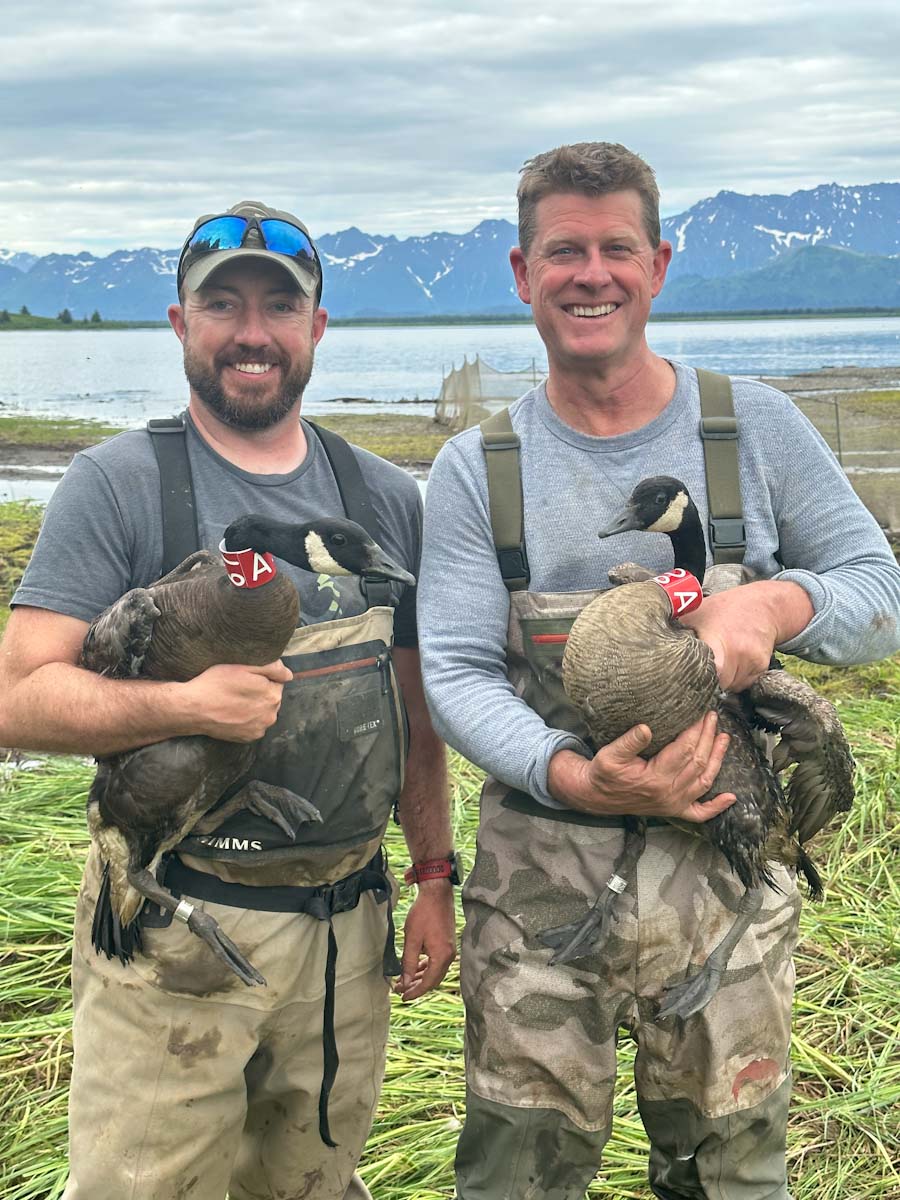
Warren and Petrie holding freshly banded duskys before the geese were released.
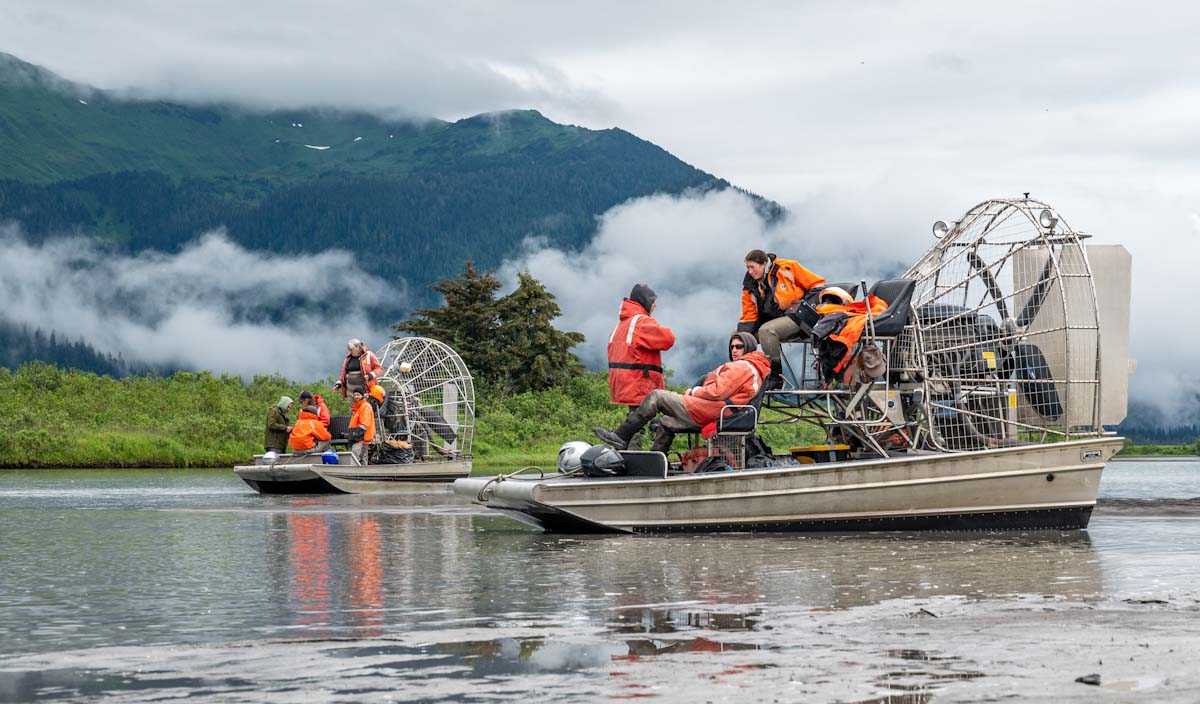
Each day, the banding team would rendevous with airboats to ferry the crew and all their gear to where the day’s banding would take place. (Photo courtesy U.S. Forest Service)

The banding crew met often to discuss a day’s strategies and objectives on the Copper River Delta. (Photo courtesy U.S. Forest Service)
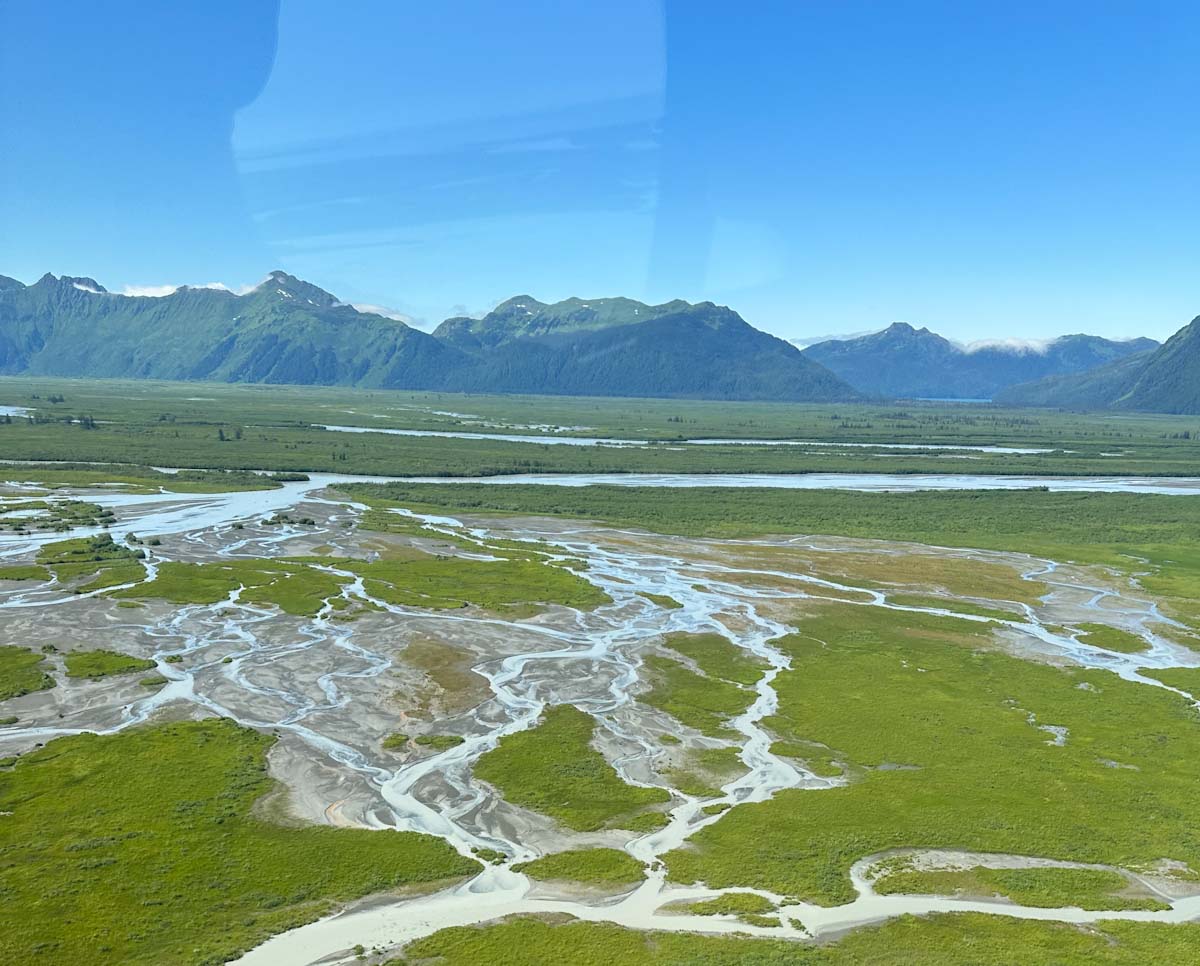
“The conditions this year were super, super wet,” Warren said. “And that made it a little difficult to try to identify good spots for banding.”
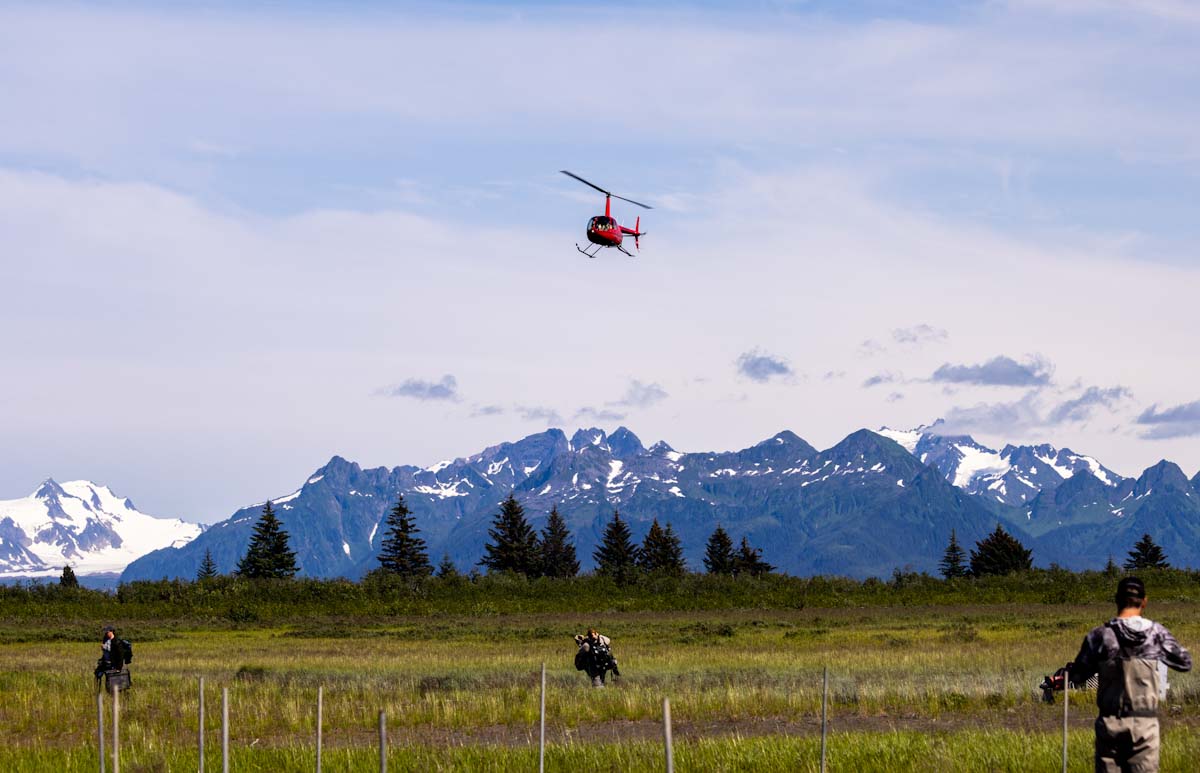
The banding team used a helicopter throughout the week to locate birds and to push them toward a capture pen. The pilot hovered above the flocks, carefully driving the geese up to a mile and a half to where the ground crew had set up the temporary fenced enclosures for the day’s banding efforts. The birds haven’t fully regrown their flight feathers after molting. This prevents the geese from flying away. (Photo courtesy U.S. Forest Service)
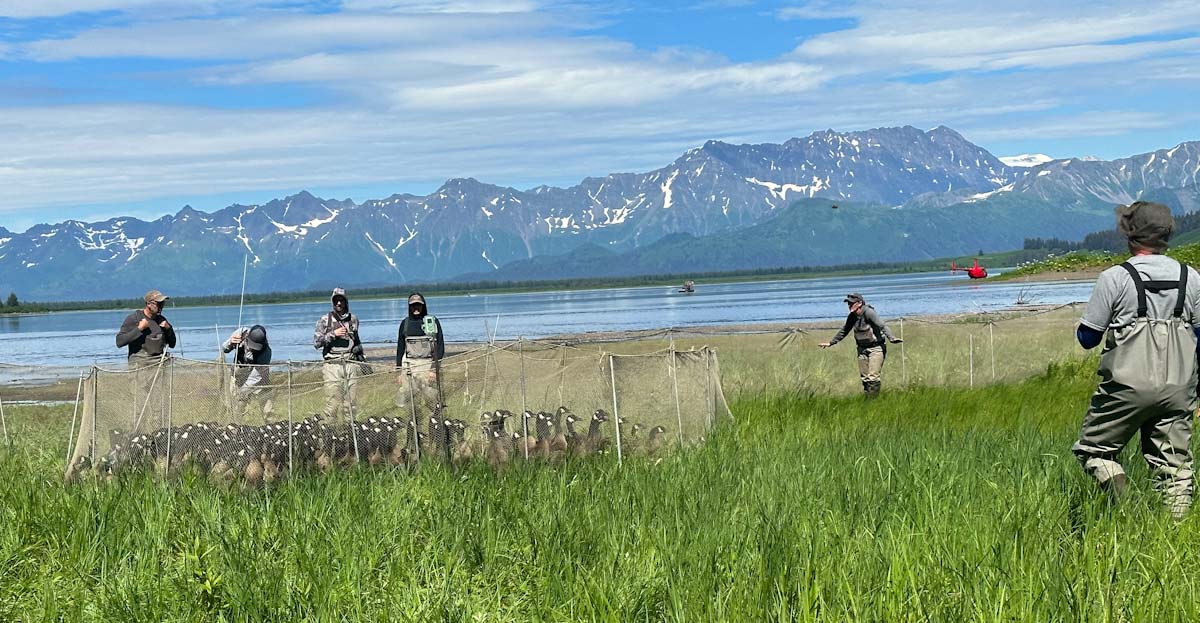
Once the chopper got the geese close to the portable pens, it was up to the ground crew to carefully shoo the birds deeper inside the enclosures, which are designed to gradually funnel geese into close confinement so they’re easier to catch and band.
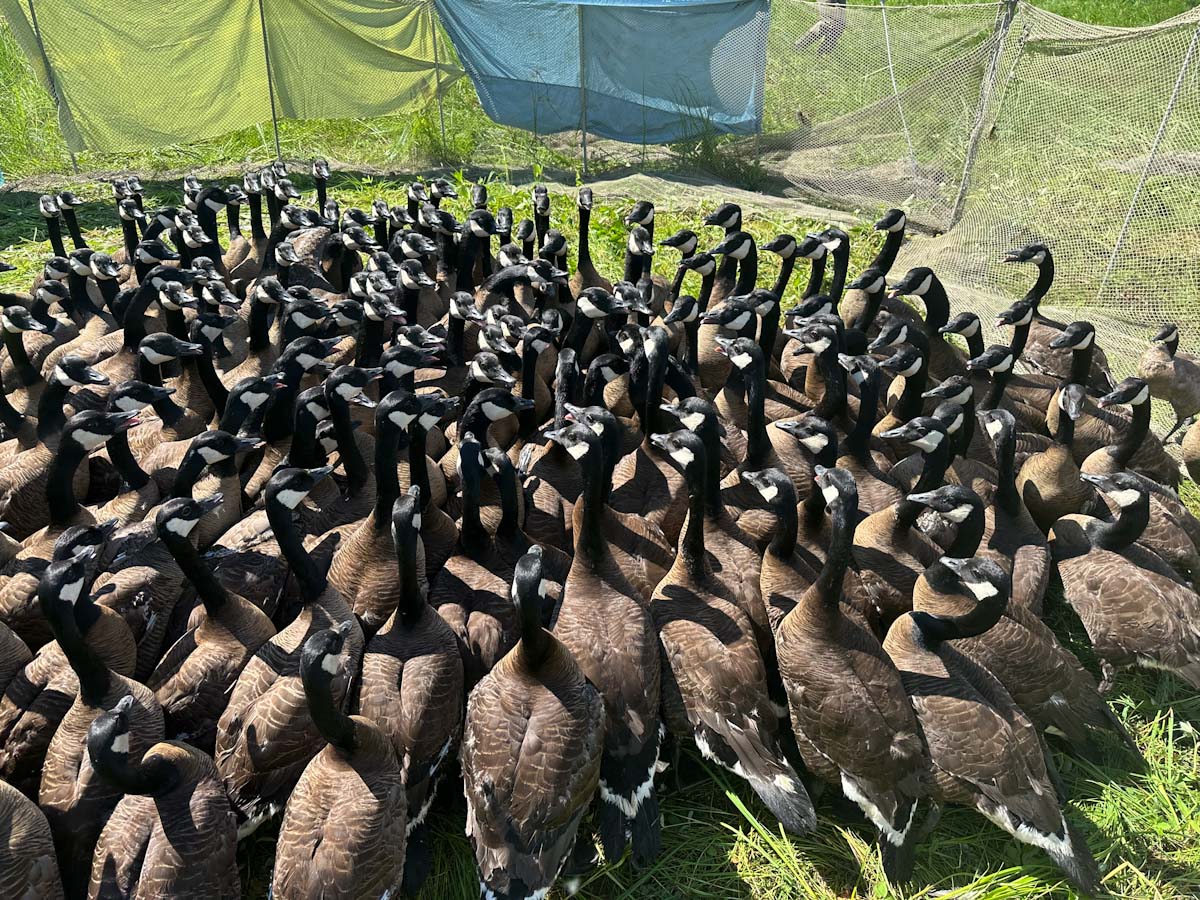
To avoid stressing the birds, the banding crews work quickly to place a leg band and collar on each goose, while also documenting its gender, health and approximate age. The data the team records during the banding process is used to better understand this unique subspecies of Canada goose. Any birds that were previously banded were also recorded and released.
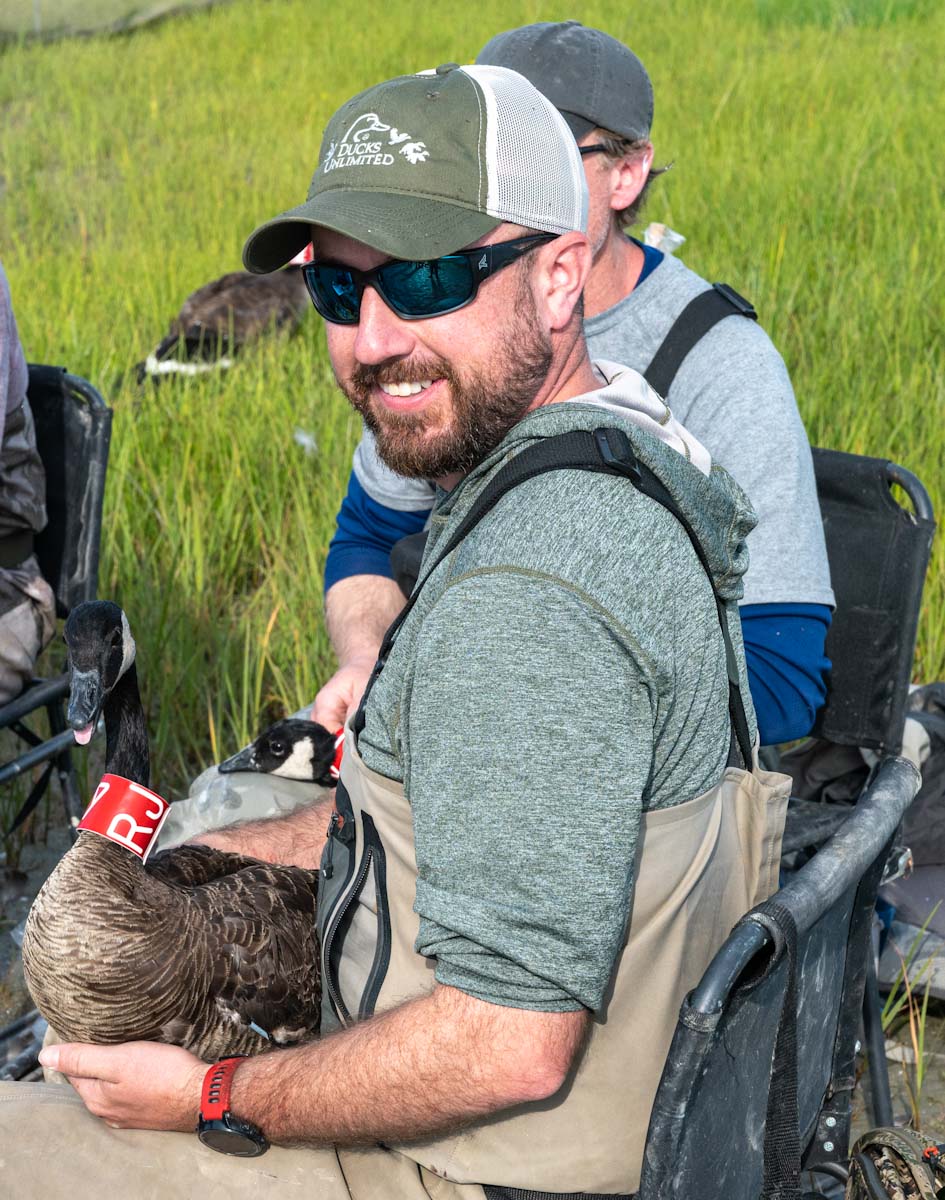
Banding geese can be demanding, physical work in the best of conditions. Canada geese are surprisingly strong, and their sharp claws can leave a bander’s bare arms covered in scratches. In Alaska, the banding team usually also has to contend with rain. On sunny days, the humidity climbs and brings out swarms of mosquitos. “It was hot and muggy and buggy,” Warren said of this year’s conditions. Some banders, including Warren, chose to roll up their sleeves to get a little relief from the heat, risking bug bites and scratches from the geese. (Photo courtesy U.S. Forest Service.)
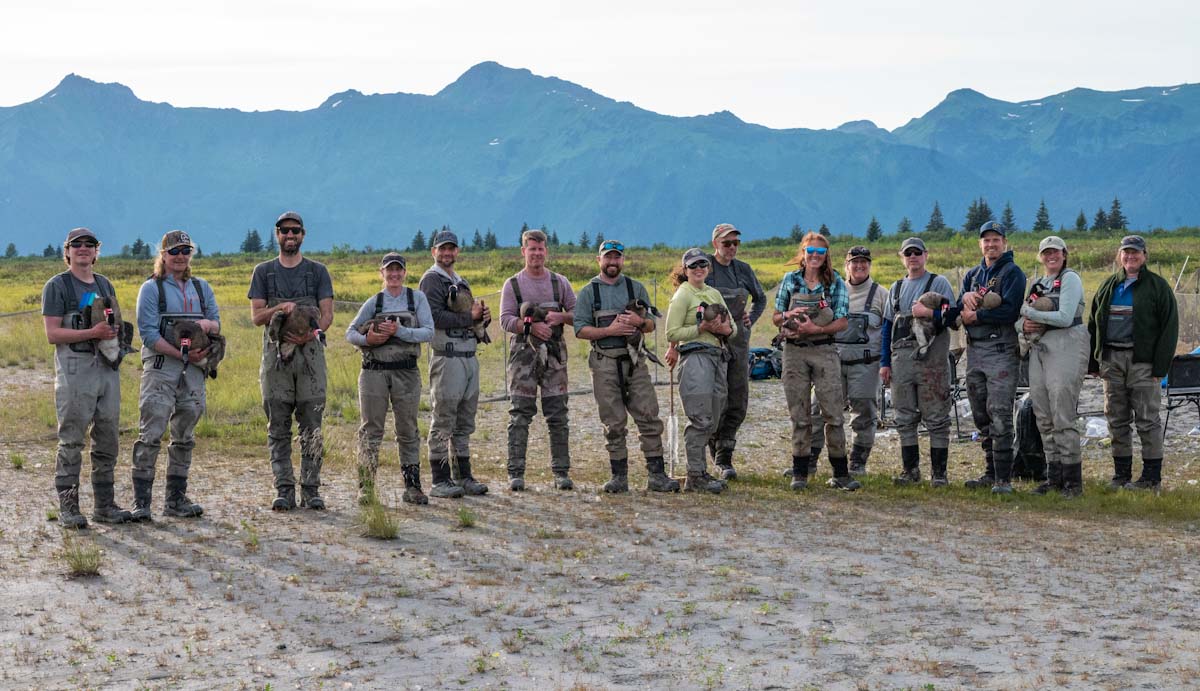
The dusky banding team successfully put leg bands and neck collars on 418 duskys this summer before releasing them back into the wild. (Photo courtesy U.S. Forest Service.)
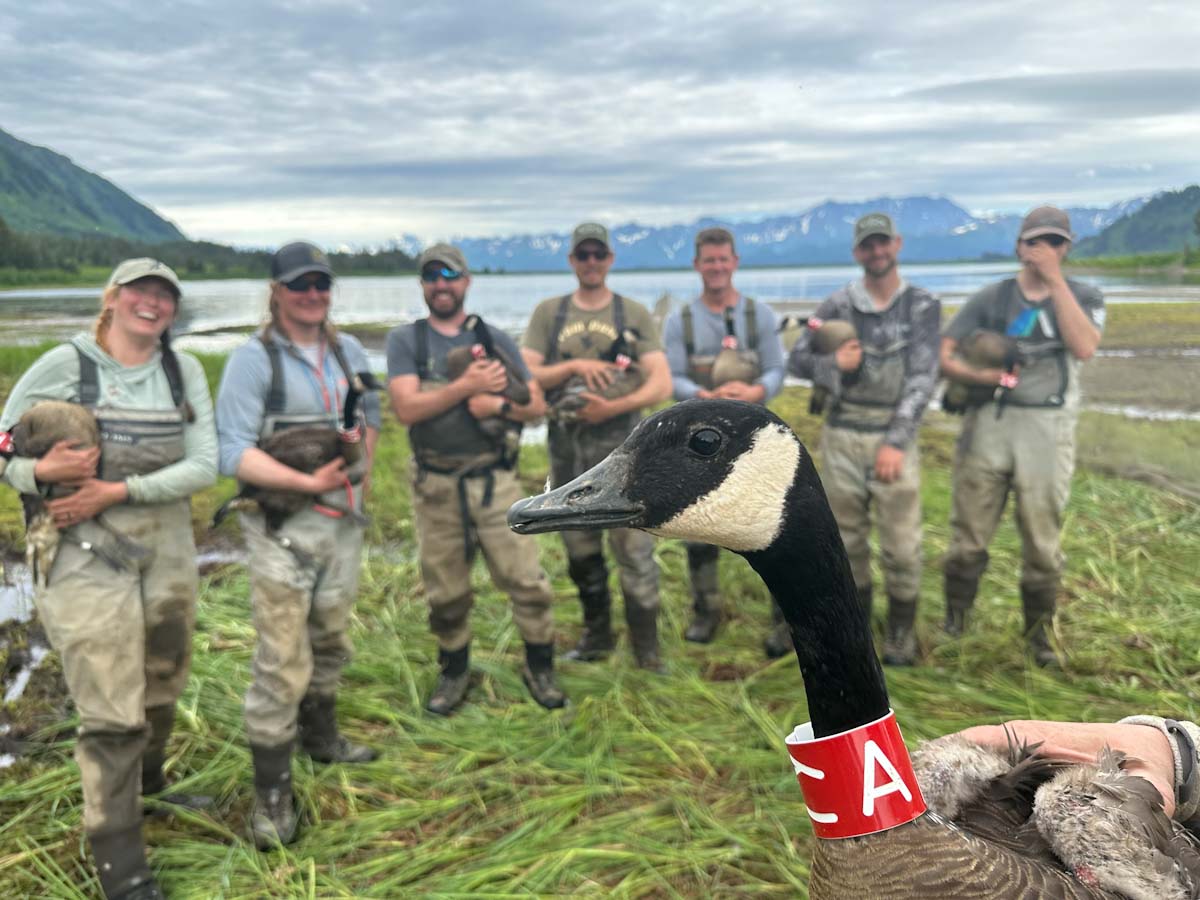
It is illegal to kill duskys in certain goose management zones in Oregon and Washington due to their limited population size, but anyone can be a part of the conservation and management of dusky Canada geese by recording or photographing collared dusky geese and reporting them to Tasha DiMarzio at Alaska Fish and Game at tasha.dimarzio@alaska.gov.
Ducks Unlimited Inc. is the world's largest nonprofit organization dedicated to conserving North America's continually disappearing wetland and grassland habitats. Established in 1937, Ducks Unlimited has restored or protected more than 16 million acres thanks to contributions from more than a million supporters across the continent. Guided by science, DU’s projects benefit waterfowl, wildlife and people in all 50 states. DU is growing its mission through a historic $3 billion Conservation For A Continent capital campaign. Learn more at www.ducks.org.
Media Contact:
Ryan Sabalow, Western Region - Communications Coordinator
(916) 805-1210
rsabalow@ducks.org